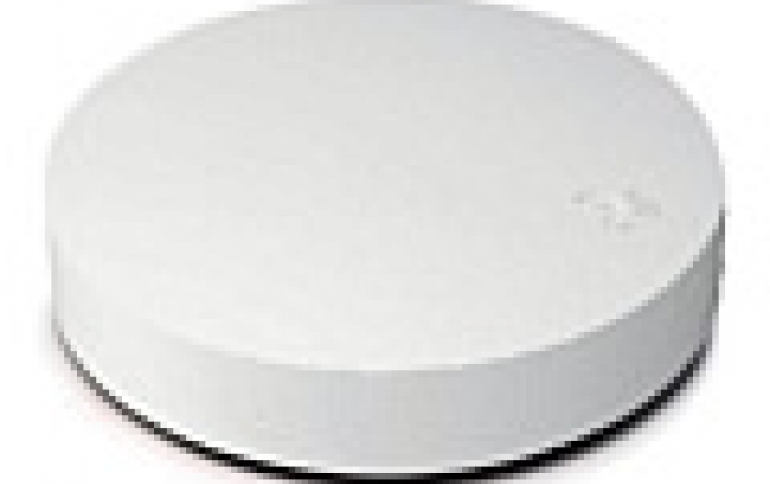
New Tracking Technology Visualizes Wireless Signals
Cognitive Systems, a Canadian start-up backed by one of BlackBerry's founders, on Tuesday unveiled the Amera technology that tracks wireless signals in order to detect intruders, manage crowds or find victims of natural disasters.
The company released a new platform that allows real-time visualizations of wireless signals, extracts environmental information embedded in those
signals, and secures wireless networks and physical spaces.
Cognitive?s platform detects motion using wireless signals and identifies wireless devices connected to a user?s network. Applications built on the platform notify users when a device authorized or unauthorized connects to their network or when an untrusted network is broadcasting in their vicinity.
Cognitive's amera sensor, and its underlying R10 chip, mark the first product release from Cognitive. amera detects the presence of wireless signals from cell towers, Wi-Fi base stations, and rogue signals, then alerts users of potential threats to their cybersecurity. Homes and offices can be protected from unauthorized devices. Public spaces such as coffee shops, restaurants and airports can protect their customers from unknowingly using unsecure networks.
"This technology will help businesses, organizations and consumers protect their data and devices from hackers who would take advantage of weak wireless security or set up dummy networks to snoop and steal private information," said Taj Manku, Cognitive's co-founder. "While the technology behind amera is complex, it communicates information to users in an understandable form through a sleek sensor unit and applications that can be accessed via their smartphones or computers."
Cognitive's vertically integrated system also includes a cloud computing network in order to deliver the data amera gathers to the user. amera also senses motion in physical spaces by detecting small changes in the wireless signals it receives, even through walls and in the dark.
The core technology powering amera is Cognitive's R10 supercomputer chip, featuring four wireless receivers and highly-configurable dual multi-vector processors.
"The R10 chip functions like the human eye, only it can see invisible wireless signals that people cannot," said Manku. "And the chip is much faster. It can respond to and report on signals in one-millionth of a second."
"Technically speaking, the R10 chip is engineered with three layers of design," Oleksiy Kravets, co-founder of Cognitive, elaborates. "The first layer contains a matrix of radios for sensing wireless signals, the second layer contains a grid of digital signal processing modules, and the third is the software used to configure silicon sub-systems and process the data."
With five custom CPU cores, the R10 chip has significant capabilities in detecting and processing wireless signals in real-time.
Cognitive and its partners already see uses for it in emergency location services like finding a skier in an avalanche or a lost child at a theme park. The platform can also be used to provide a picture of crowd movement and traffic flow, allowing optimized use of retail areas, airports, sports stadiums and other high density environments.













